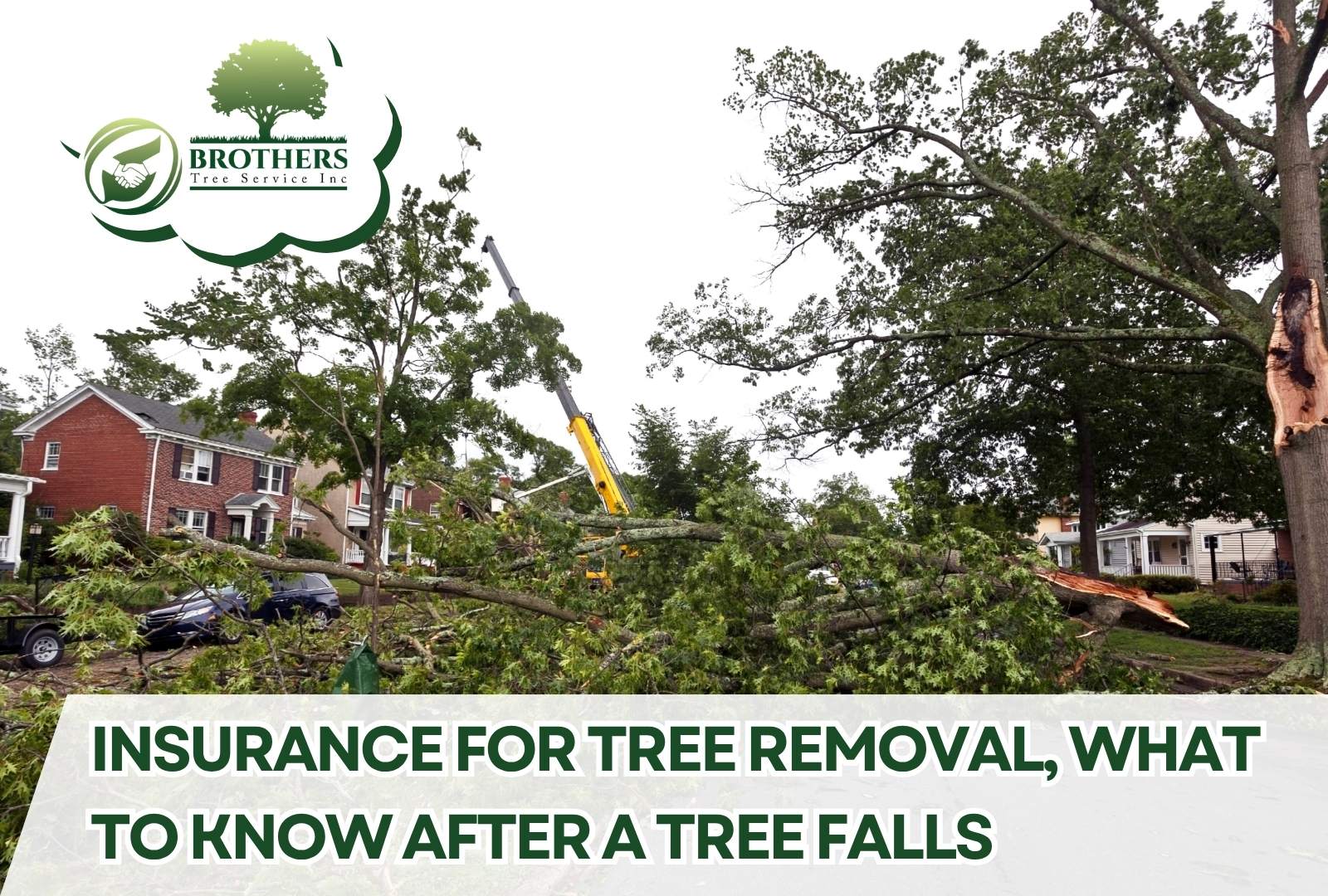
When a tree suddenly falls on your property, the cleanup can feel overwhelming. From dealing with damage to figuring out who pays for the removal, there are a lot of questions, and one of the biggest is whether your insurance covers it. Knowing how insurance for tree removal works helps you act quickly and avoid out-of-pocket surprises.
At Brother’s Tree Service INC, we guide homeowners through emergency situations every day. This article explains what steps to take after a tree falls, how to handle the removal process, and what factors influence fallen tree removal cost, especially when insurance is involved.
First Step: Stay Safe and Document the Damage
Immediately after a tree falls, check for safety hazards. If the tree is touching power lines or resting on your home, move to a safe area and call emergency services. Your safety is always the top priority. For more tips on how to secure your space after a fall, our tree safety guide can help you assess risks without putting yourself in danger.
Once it’s safe, take clear photos of the tree, the damage, and any affected structures. These photos are essential for insurance claims and for the tree service provider you call next. Our team offers emergency tree removal services to restore safety and start cleanup fast.
Will Insurance Cover Tree Removal?
Whether or not your insurance policy covers tree removal depends on how and where the tree fell. In many cases, if a tree damages a covered structure—like your house, garage, or fence—your homeowner’s policy will cover removal and repairs.
However, if the tree falls without causing damage (for example, in the yard), some policies may not cover the cost of removal. Every insurer has different guidelines, so it’s important to review your policy or contact your provider directly to confirm coverage.
If you’re unsure whether a tree on your property is at risk, our tree removal signs guide can help you identify potential problems before they become emergencies.
What Influences Fallen Tree Removal Cost?
Even with insurance, you may still want to understand what goes into pricing. The cost of removing a fallen tree depends on several things: the size of the tree, how accessible it is, and how much damage it caused. For instance, trees that have fallen on structures or are tangled in power lines usually require special equipment and more time to remove safely. Get in touch.
Emergency timing also plays a role. Weekend or storm-related calls may come with added challenges and urgency. Our team follows strict tree removal safety practices to ensure everything is handled with care, regardless of complexity.
FAQs – Insurance and Fallen Tree Removal
Will my insurance cover tree removal if the tree fell from a neighbor’s yard?
Possibly. If the tree caused damage to your property, your insurer will typically cover it, even if the tree originated next door. Documentation is key.
Do I need to get approval before removing the tree?
In most cases, no, but it’s smart to contact your insurance provider first to ensure they approve the claim. Always keep receipts and before-and-after photos.
What if the tree didn’t cause damage?
Some policies may not cover removal unless the fallen tree caused damage to a structure. You may need to pay out of pocket if it only affected the yard.
Let Us Help You Through the Process
If you’re dealing with a fallen tree and wondering how insurance plays a role, Brother’s Tree Service INC is here to assist. From emergency response to helping you document everything for your claim, our team provides full support and safe, fast cleanup.
Start the process today by contacting us or exploring our emergency removal services.
